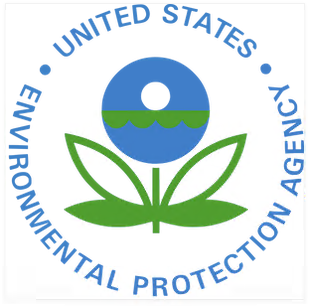E-cigarettes Are Not Healthy. As the popularity of e-cigarettes across the country has spiked, so has the number of cases of a dangerous, deadly, and mysterious respiratory illness

Vaping, the increasingly popular practice of inhaling vapor from a device by heating a liquid that can contain nicotine, marijuana, or other drugs, has been used in the United States for over a decade and has been considered safer than traditional cigarettes because it doesn’t burn tobacco. However, recent reports of deaths and serious illness and injury have made health and government officials begin to look more closely at the safety of this new trend.
Risks Associated with Vaping
Hundreds of people across the United States have been diagnosed with a mysterious respiratory illness that has one common link: vaping. According to the Centers for Disease Control and Prevention (CDC), there have been over 200 confirmed cases of the disease in 25 states between June 2019 and August 2019, alone. Each patient reported using e-cigarette and vaping products. In New York had alone, doctors have reported 34 cases of severe pulmonary illness.
So far, two people have died and many more have become severely ill – some requiring oxygen support through ventilators, others put into medically induced comas, and some experiencing seizures. The majority of the patients are in their late teens to mid-twenties, and none of them have any underlying health issues that may have contributed to the symptoms.
There are several symptoms that the patients have in common:
As the popularity of e-cigarettes across the country has spiked, so has the number of cases of a dangerous, deadly, and mysterious respiratory illness.
- Coughing
- Shortness of breath
- Nausea
- Vomiting
- Chest pain
- Difficulty breathing • Diarrhea
- Fatigue
- Fever
- Weight loss
Because there is no known cause, treating patients has become increasingly difficult. On August 23, 2019, officials reported the first death caused by the mysterious respiratory illness. The 30- year old female patient came down with symptoms of the mysterious respiratory disease after vaping, became hospitalized, and soon died.
What is Causing Health Scares?
One of the biggest concerns is that Vitamin E might be a contributing factor to the health problems. Vitamin E is found naturally in some foods and its oil, known as vitamin E acetate, is a common nutritional supplement used in topical skin treatments.
While vitamin E acetate is not known to cause harm when ingested as a vitamin supplement or applied to the skin, experts warn that its molecular structure can be dangerous when inhaled. Vitamin E acetate must be very hot to vaporize; and once it does, it decomposes, subjecting users to inhale all kinds of unknown substances.
When the vapor cools down in the lungs, it returns to its original state and coats the lungs with whatever other chemicals were used in the vape.
Big Vape Companies Did Nothing to Warn Users of the Risks
Aside from the concerns over Vitamin E acetate, vaping products have been found to contain extremely harmful chemicals in the liquid, and use dangerous materials in the devices.
Harmful Material in the Devices
- Paint
- Fuel
- Hexamine (barbecue lighter fluid)
- Cadmium (used in car batteries)
- Toluene (industrial solvent)
- Acetic Acid (vinegar)
- Fuel
- Heavy metals like nickel and lead
- Aerosol
- Chromium
- Butane (lighter fluid) Nicotine
- Ammonia (harsh cleaning compound)
- Carbon Monoxide
- Arsenic (poison)
- Diacetyl (linked to lung disease)
- Stearic Acid (candle wax)
- Propylene Glycol (creates artificial smoke)
- Turpentine (harsh paint stripper)
E-cigarettes Are Not Healthy, E-cigarette Companies Are Not Doing Enough
There is currently very little, if any, regulation on e-cigarettes, and the FDA and CDC are only now getting involved because of the serious health concerns. This lack of regulation has created the perfect storm: money hungry e-cigarette companies that are pumping out deadly, unregulated, pretty products to users while the demand is at a high, and unsuspecting users enjoying a fad, unaware of the deadly consequences it may have.
On December 18, 2018, the U.S. Surgeon General declared e-cigarettes as an epidemic and described a “historic, unprecedented increase” in use. The Department of Health and Human Services noted that because vaping products contain a variety of chemicals and metal particles with an unknown long-term health impact, it declared a “youth vaping public health emergency.” The federal government banned the sale of vaping products to minors.
But while government and health officials are swift to address the concerns around vapes, e- cigarette advocates and e-cigarette companies, like Juul, have done the bare minimum to protect users from the harmful chemicals and possible adverse health effects caused by using vapes.
The American Vaping Association (AVA), which promotes e-cigarettes, blasted Michigan’s announcement of banning all flavored e-cigarette cartridges as E-cigarettes Are Not Healthy.
The AVA vowed to support any lawsuits challenging the rules limiting e-cigarettes. AVA president Greg Conley argued, “This shameless attempt at backdoor prohibition will close down several hundred Michigan small businesses and could send tens of thousands of ex-smokers back to deadly combustible cigarettes. These businesses and their customers will not go down without a fight.”
While a Juul spokesman conceded that flavored cartridges enticed teens to use vapes and it supports the decision to stop selling them, Juul believes that its menthol products, including its mint flavor, encourage adult smokers to switch from cigarettes to e-cigarettes and e-cigarettes should be available for purchase where tobacco and menthol-based cigarettes are sold.
Juul’s response is weak at best, and shows how little the company is concerned about the health of its users. E-cigarette users have the right to know what they are ingesting and e-cigarettes must become honest about the products they are pushing before it’s too late.

 Though it’s been two decades since news of this asbestos disaster – one of the worst environmental disasters in the country – came to light, Libby residents and those close to them are still affected each and every day, mostly because hundreds of them have developed asbestos-related diseases.
Though it’s been two decades since news of this asbestos disaster – one of the worst environmental disasters in the country – came to light, Libby residents and those close to them are still affected each and every day, mostly because hundreds of them have developed asbestos-related diseases. Employees at the Rockhill Quarry in East Rockhill, Bucks County, Pennsylvania exposed the fibrous material during routine excavation work and immediately contacted the Pennsylvania Department of Environmental Protection (DEP) to report the find. The DEP gave strict orders on how to proceed.
Employees at the Rockhill Quarry in East Rockhill, Bucks County, Pennsylvania exposed the fibrous material during routine excavation work and immediately contacted the Pennsylvania Department of Environmental Protection (DEP) to report the find. The DEP gave strict orders on how to proceed. Involved in the coalition were the Asbestos Disease Awareness Organization (ADAO) and the Environmental Working Group (EWG). Together they had requested that the Environmental Protection Agency (EPA) use its authority under the Toxic Substances Control Act (TSCA) to require importers and users of asbestos and asbestos-containing products to report on their activities and then disclose these reports to the public, allowing information about asbestos to flow freely.
Involved in the coalition were the Asbestos Disease Awareness Organization (ADAO) and the Environmental Working Group (EWG). Together they had requested that the Environmental Protection Agency (EPA) use its authority under the Toxic Substances Control Act (TSCA) to require importers and users of asbestos and asbestos-containing products to report on their activities and then disclose these reports to the public, allowing information about asbestos to flow freely. It’s a nice scenario, but such a scene generally does not accurately portray the time and money it takes to properly remove asbestos-containing materials from a home. In addition, shows like these don’t often mention that the abatement and disposal of toxic asbestos materials need to be done by a professional.
It’s a nice scenario, but such a scene generally does not accurately portray the time and money it takes to properly remove asbestos-containing materials from a home. In addition, shows like these don’t often mention that the abatement and disposal of toxic asbestos materials need to be done by a professional. According to the Marin Independent Journal, the settlement resolves litigation filed by ten different California counties against Equity Lifestyle Properties Inc. and two related entities, MHC Operating Limited Partnership and Realty Systems Inc.
According to the Marin Independent Journal, the settlement resolves litigation filed by ten different California counties against Equity Lifestyle Properties Inc. and two related entities, MHC Operating Limited Partnership and Realty Systems Inc. In the case of Mary Juni versus Ford, A. O. Smith Water Products, et al, the court found that Ford Motor Company is not responsible “viewing the evidence in the light most favorable to plaintiffs, the evidence was insufficient as a matter of law to establish that respondent Ford Motor Company’s conduct was a proximate cause of the decedent’s injuries …”.
In the case of Mary Juni versus Ford, A. O. Smith Water Products, et al, the court found that Ford Motor Company is not responsible “viewing the evidence in the light most favorable to plaintiffs, the evidence was insufficient as a matter of law to establish that respondent Ford Motor Company’s conduct was a proximate cause of the decedent’s injuries …”. Drug inspectors in India were among the first to react, seizing samples of Johnson & Johnson’s famous Baby Powder from a factory in Baddi, intent on testing them to determine whether there is indeed asbestos present.
Drug inspectors in India were among the first to react, seizing samples of Johnson & Johnson’s famous Baby Powder from a factory in Baddi, intent on testing them to determine whether there is indeed asbestos present. The federal regulations that were announced this past fall serve to fulfill a 2016 promise by the government that will prohibit the import, sale, and use of asbestos and asbestos-containing products. But there are still some exceptions.
The federal regulations that were announced this past fall serve to fulfill a 2016 promise by the government that will prohibit the import, sale, and use of asbestos and asbestos-containing products. But there are still some exceptions.